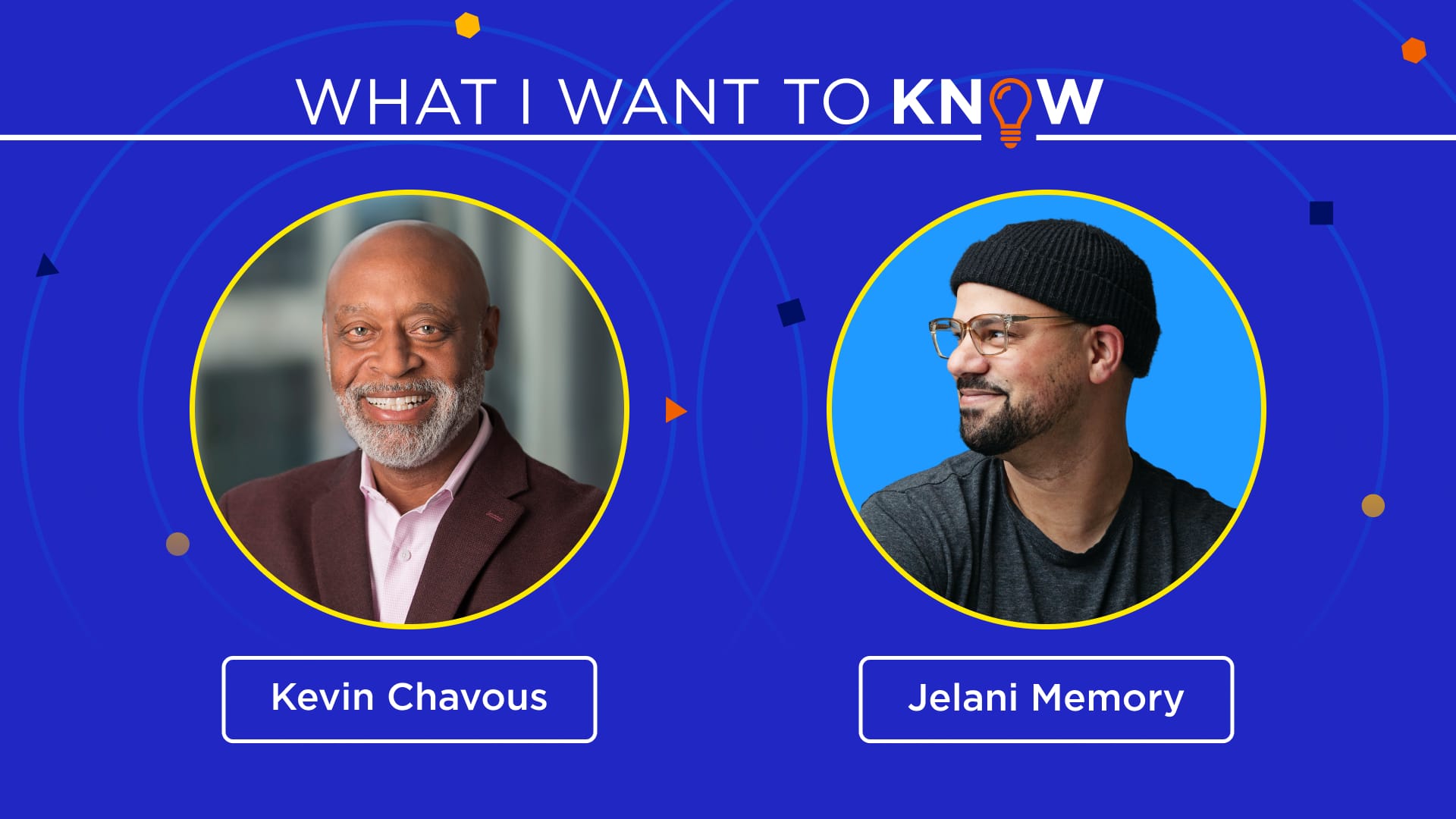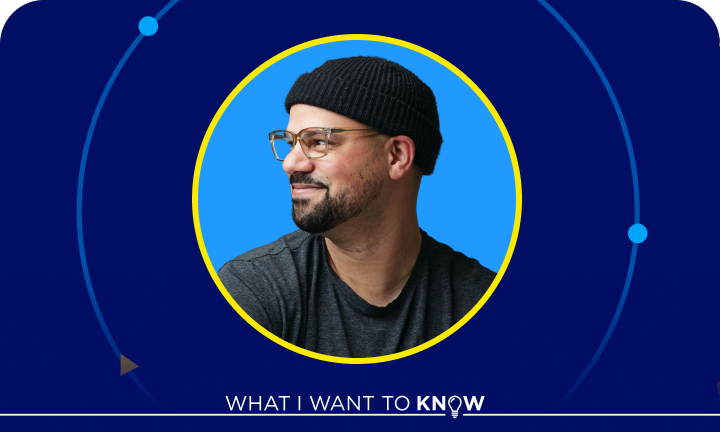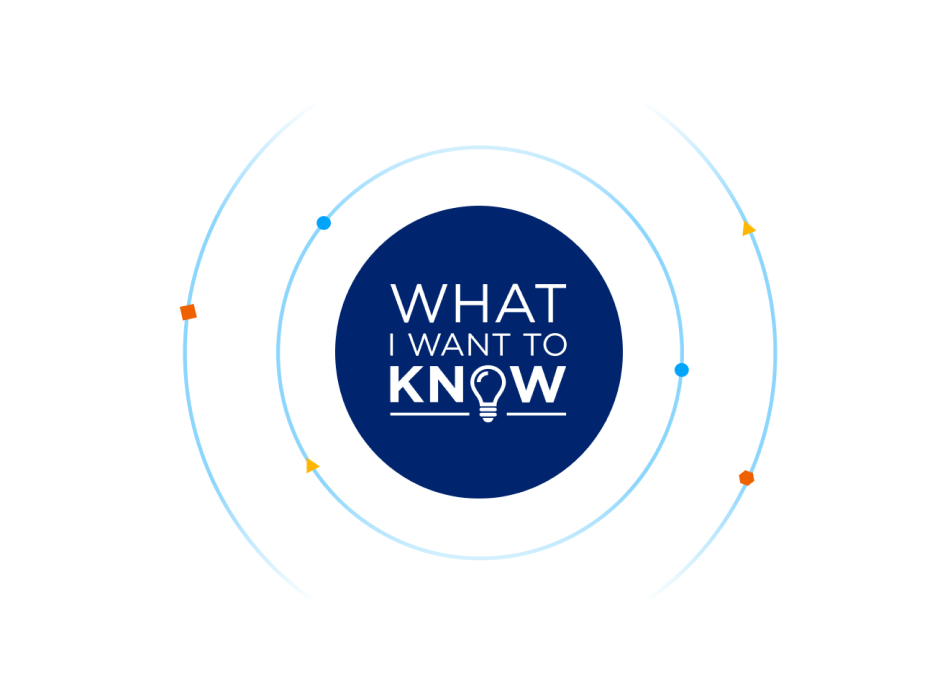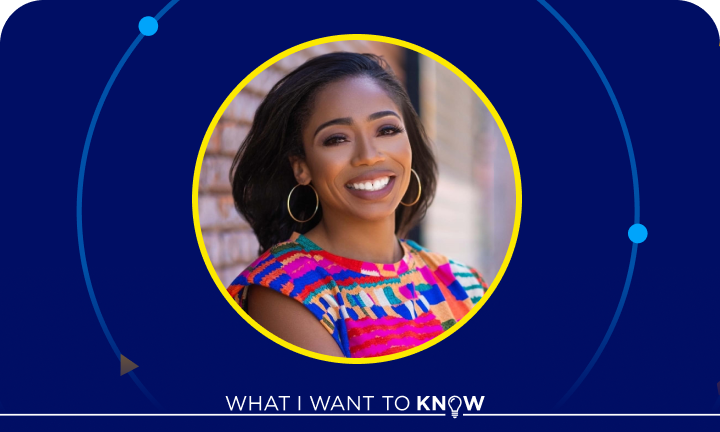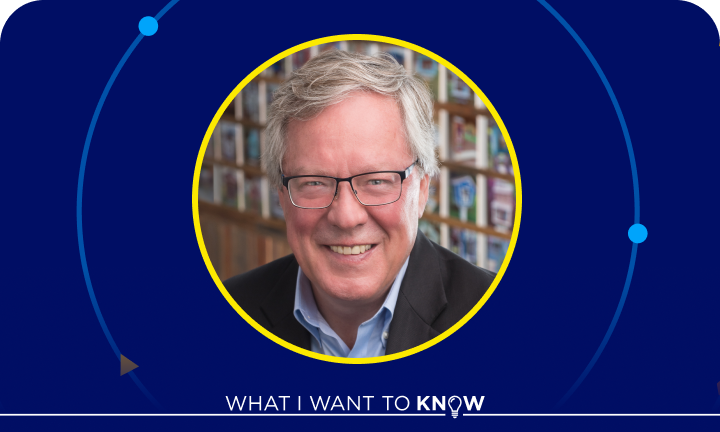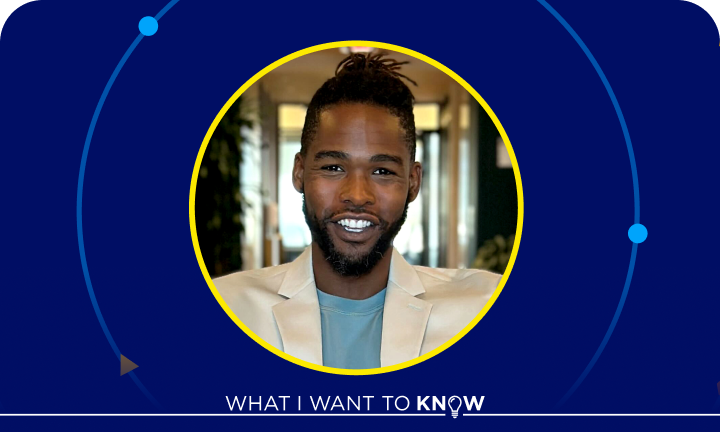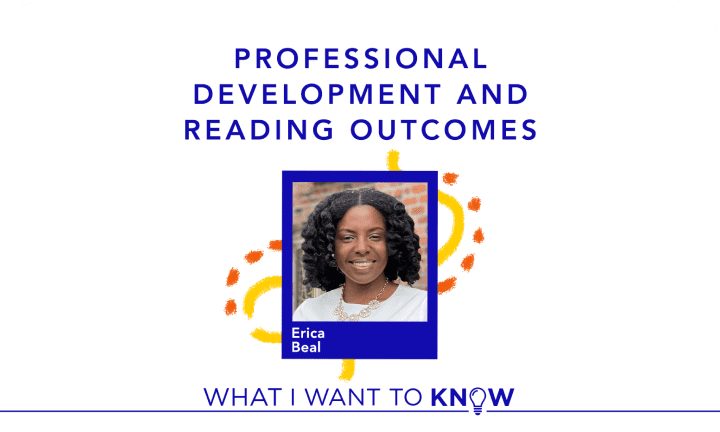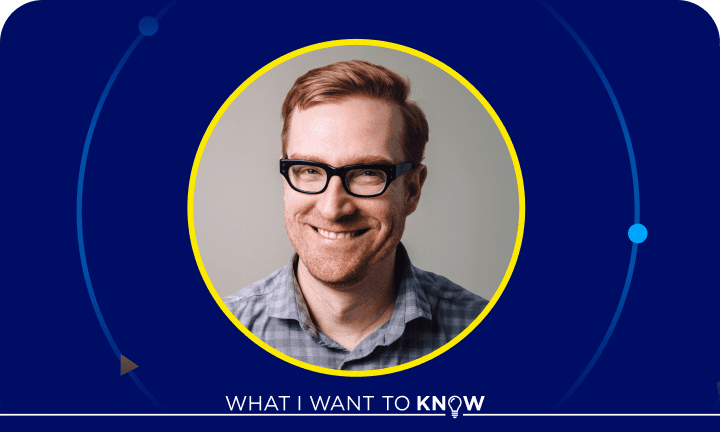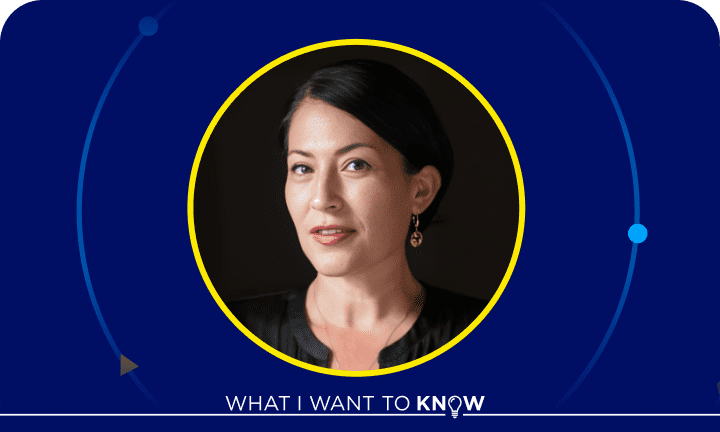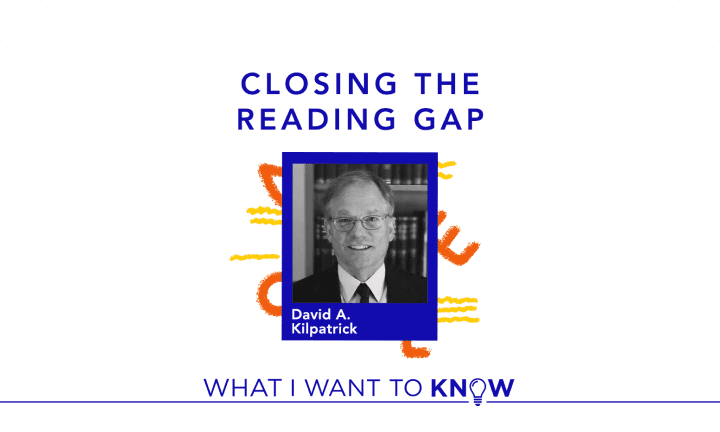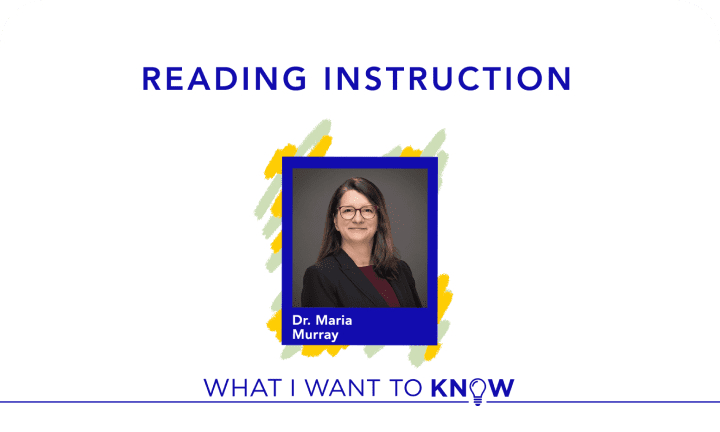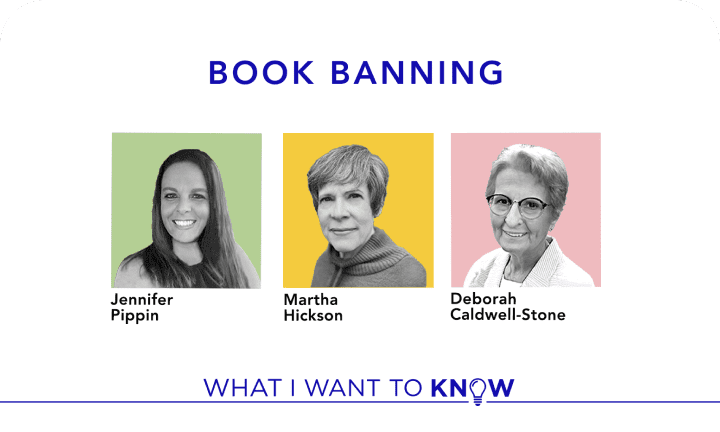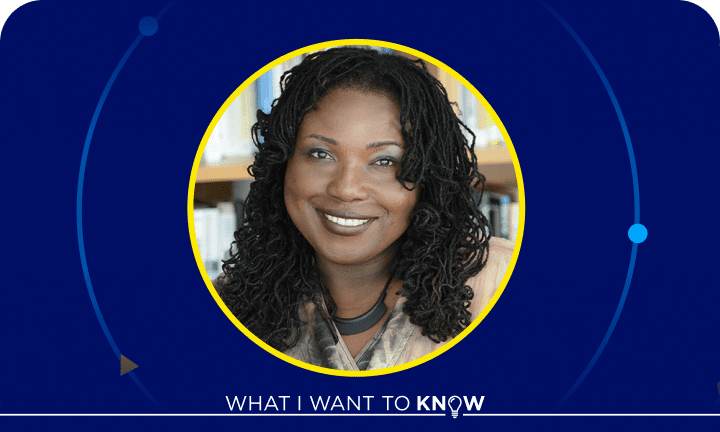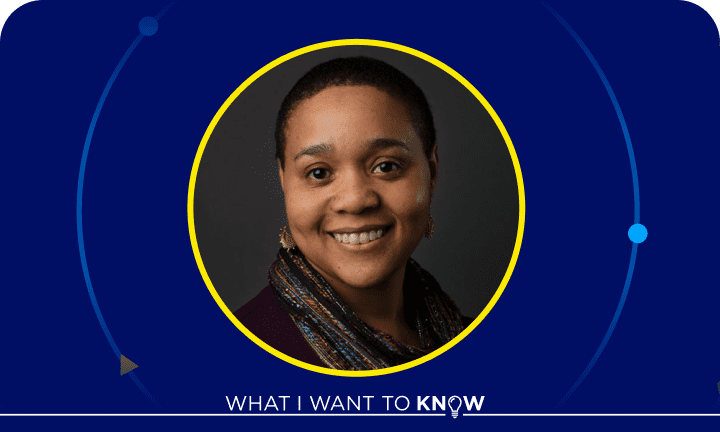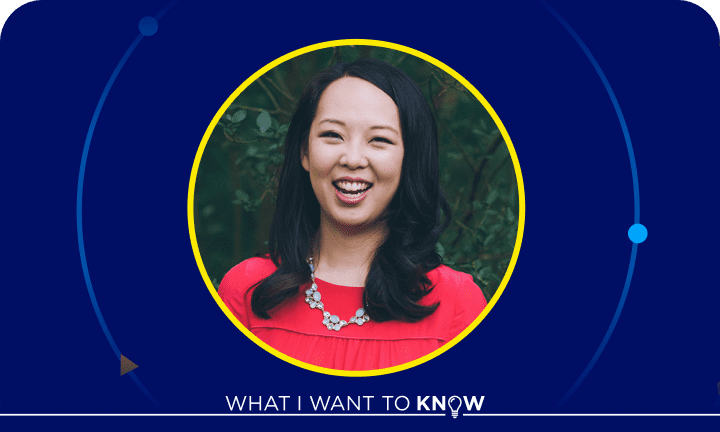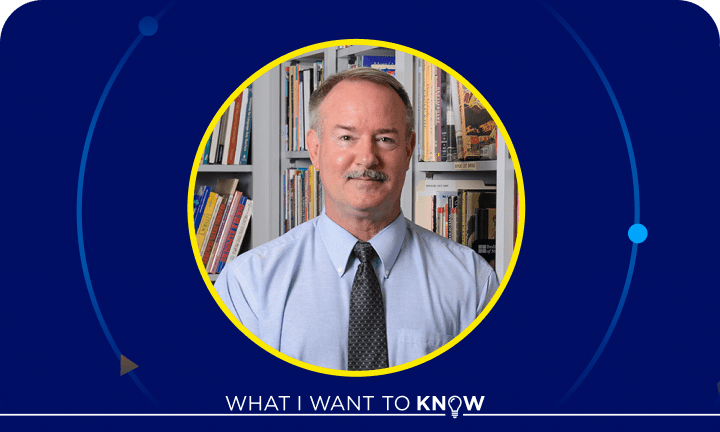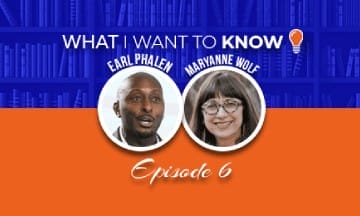March 6, 2024
EP. 144: How can books introduce kids to tough topics?
A survey found that one in five parents struggle to have meaningful conversations with their children. When it comes to topics like mental health, racism, shame, violence, and more, parents often strain to find the right way to introduce these topics to their children.
Could books be the answer to this problem? What challenges are parents facing when it comes to communicating with their children? How can books introduce kids to tough topics? And why is it important to speak to children about difficult subjects?
Jelani Memory joins Kevin in this episode to discuss how books can introduce kids to complicated topics.
Listen on: Apple Podcast, Spotify
Meet Jelani
Jelani Memory founded A Kids Book About. This company publishes books to help parents start conversations with their kids about complex topics, like divorce, feminism, mental health, shame, and mindfulness.
Kevin: March is National Reading Month, and “What I Want to Know” is celebrating with some very special guests. Greig Metzger from Little Free Library will discuss how books can build community. Literacy influencer Oliver James will share his inspiring story of learning how to read. Jelani Memory and I will talk about how books can introduce kids to tough topics. And author Alliah Agostini will speak on representation in children’s literature.
Educators and parents everywhere want to instill in kids a lifelong love of reading, so make sure to catch these important conversations by subscribing to “What I Want to Know,” with Kevin P. Chavous on Apple Podcasts, Spotify, or your favorite podcast or social media platform. And visit k12.com/reading for more resources.
Jelani: Show me a classroom who’s not affected by divorce in some way. There’ll be at least 50% of the kids in there have parents who are divorced, right? So is divorce on the table to talk about for kids who are experiencing it directly? Show me a kid who hasn’t had either a parent or a brother or a sister, or a friend’s parent, brother or sister, or an auntie, or an uncle who’s passed away. Like even at the age in, you know, kindergarten, first grade, second grade. And so when these events, when these moments, when these topics touch a kid’s life, then you have to ask yourself, “Isn’t it actually worse if we don’t talk about it, if we don’t engage in it?” And I think these things have to be done at home and at school, that they work in partnership together to tackle these big topics.
Kevin: A survey found that one in five parents struggle to have meaningful conversations with their children. When it comes to topics like mental health, racism, shame, violence, and more, parents often strain to find the right way to introduce these topics to their children. Could books be the answer to this problem? What challenges are parents facing when it comes to communicating with their children? And how can books introduce kids to tough topics? This is “What I Want to Know,” and today I am joined by Jelani Memory to find out.
Jelani Memory is the founder of A Kid’s Book About, a company that publishes books to help parents start conversations with their kids about complex topics, things like divorce, feminism, mental health, shame, and mindfulness. He joins us today to discuss how books can introduce kids to tough topics. Jelani, welcome to the show.
Jelani: Well, it’s a pleasure to be here. Thanks for having me.
Kevin: Well, I tell you what, I’m excited to have you here. This is another one of our episodes recognizing National Reading Month. And what you do, your expression of reading has come a long way. I want to talk about your company and your business, A Kid’s Book About, and that unique, dynamic concept. But I also am fascinated, Jelani, about your own story. And I’ve heard you talk about it, you know, in other interviews, but for the listening audience that we have here, just talk about your upbringing and your experience with the challenge of not being able to read, and then how you were able to overcome that and take it to the next level.
Jelani: Yeah. So born the youngest of four kids. You know, dad would leave by the time I was 4, so I don’t really have any memories of him in the home. And, you know, our mother worked nights as a nurse, putting food on the table and driving us to soccer practice and karate and every other extracurricular you could imagine. And, you know, us kids were sort of left to fend for ourselves a little bit when it came to the social-emotional sort of school stuff. I don’t remember ever being asked to do my homework or clean my room. There just wasn’t the emotional space for it.
And look, I was a talented, artistic, smart kid, but I struggled at reading. And when I say struggled, I mean I just, I hit a point in, I think, sixth grade when I just sort of quit trying, because I realized all the other kids were clocking like a page every minute or 2 minutes, and it was taking me 5 to 10 minutes to read a page in a book. And I just thought, “I’m never going to catch up to them.” So I just stopped. And that persisted all the way through middle school and into high school, believe it or not. And, you know, I was effectively illiterate.
And I think the big change for me happened when I realized that I was missing out on all these incredible stories, stories from the past, stories from the present, stories from folks’ imagination. And I was gifted a book by a friend’s dad called “The Brothers K.” Really incredible book, 350 pages. I never could have imagined ever reading a book like that, but I just one day decided to sit down and start reading it during lunch at school and was just totally taken with it. So this is my junior year in high school. And I thought, “How come nobody ever told me there are these incredible stories and lives and people inside of these books?” And that really drove me.
Now, still to this day, my 14-year-old daughter reads faster than I do. I read really slow. I read at the pace that I talk at, believe it or not, which really surprised my kids when I told them that. For me, reading is about learning, it’s about discovery, but it’s also about joy. It’s about, you know, finding yourself and what you like, what you love, what you can be inside of these stories. And that’s really where the big change happened for me.
Kevin: You know, what’s fascinating, Jelani, and I really want to get to where you are now and how your love of reading has become an avocation and an occupation. But we hear so many stories about kids coming through similar circumstances as you, they effectively are illiterate and can’t read, yet you said you stopped pretty much in sixth grade, and yet your next experience that sort of turned your life around was when you were in junior high school. How are kids able to continue to be in school and be promoted grade by grade if they effectively can’t read? I mean, from your experience as a person who went through it.
Jelani: Yeah. You know, I realized at some point that school was really broken. I remember thinking this when I was, you know, a seventh grader, an eighth grader, or a sophomore in high school. I just thought, “This isn’t really working, or at least not for me.” I did really well on tests because I was smart, but I just never could grok or get around, you know, doing my homework, and the reading portion I would just basically opt out of every time. And so I’d get my, you know, C’s and sometimes D’s, but sometimes B’s, and maybe an A if it was art or gym. And I think, you know, kids like me, we get sort of lost in the shuffle. We just sort of make it through. We scrape by.
I remember every teacher I ever had said, “Jelani, you have so much potential.” And I remember thinking, “Is it my job to extract all this potential? Isn’t that your job, right?” And I think that’s where it’s not just what happens in school, it’s about what’s happening at home, it’s about what’s happening on the soccer field, it’s about what’s happening inside those little lives, hearts, and minds. And, you know, I think kids just really scrape and skate by.
And I feel really lucky that that shift happened for me, and I fell in love with reading, and I fell in love with education. And, you know, now I get to work in a field amazingly enough where I get to publish my own books and I get to publish books by other authors, which is incredible. And never in a million years could I have thought I would have been here, but in some senses, I was just lucky just to sort of I was skating by just barely, and that shift happened for me.
Kevin: When you talk about skating by, I was struck by one thing you said in another interview where you said that you kind of mastered the art of when there was a reading assignment, to just turn the page, you know, in an appropriate way to make it look like you were reading like everyone else.
Jelani: Yeah. You just fake it till you make it. And for me, it was, you know, I wasn’t really even making it. Yeah, I remember just the whoosh of the kids turning the pages so fast, and I thought, “How could you possibly have read all the words on this page?”
Kevin: Wow.
Jelani: I was just, like, doing the math in my head. And so I just turned the page too. It didn’t matter where I was at. Like still to this day, if a chapter is too long in a book, I get anxious. I’m just reading for myself. I’m not even reading for homework or around anybody, but I still feel that sense of dread of going, “How long is this going to take me to do?”
Kevin: Well, the beautiful thing though is that, you know, there’s something to be said about because there are people who are speed readers, super speed readers, and I’ve often wondered, and, you know, I went to school with a couple folks like that. I’ve often wondered, “Are they really retaining and getting the essence, capturing the essence of the story?” If you’re speed reading, I’ve always wondered that. And I don’t know, maybe that’s the subject of another show, Jelani. But I do think that, you know, one benefit of understanding your pacing and reading at your pace, you’re able to digest and think through a story. And obviously, you’ve been able to do that. Let’s talk about A Kid’s Book About, which the about, there’s a dot, dot, dot, it could be any number of things, how that all came about literally.
Jelani: Yeah. So I’m a father of six. It’s a blended family. So I have four white stepkids and two black biological kids, and feel like being a dad’s my superpower. I love being a dad. And it was the summer of 2018. I was working at this company that I’d started but was sort of creatively frustrated, and I thought, “I’ve always wanted to write a book. I need to sort of work out some of this creative energy. And I also want to keep these really meaningful conversations that I’m having with my kids going about race, culture, color, and, of course, racism.”
And so I thought maybe I can combine these two things, this desire to make something creative and this desire to keep this conversation going. And so I wrote “A Kid’s Book About Racism.” It’s literally titled that. It was the most obvious sort of no nonsense title I could think of.
And it was designed as a book just for my six kids to make sure they always felt comfortable using the word “racism,” asking me questions about it, going, “Hey dad, is this racist? Or this happened at school. I heard a kid say this.” But also, more importantly, for my kids to understand what my experience was like and what it’s like for someone to navigate racism on a daily basis, especially as a kid and even for me as a grownup. That my white kids would navigate it more thoughtfully. They would use their words more carefully. They would be aware of the experience of kids of color in their classrooms. And for my black and brown kids, for them to understand a bit of what they were going to experience inevitably, but also how to talk to me about it and how to not feel so alone, because I didn’t feel like I had that language as a kid.
Now, the ambition for this project was just my kids. It wasn’t publish it. It wasn’t get it out to hundreds of thousands of families. It was just, can I make a thing for my kids that shows them that I love them and I care about them, and I always want them to talk with me? It was my kids who had the idea to go, “You should turn this into more, Dad.” Their first instinct was to go, “This is cool, Dad. Can you make books on other topics?” I said, “About what?” And my daughter, Ella, was like, “You should make a kid’s book about ice cream,” which is very Ella, by the way.
My son Jay said, “You should make a kid’s book about divorce.” And I was really struck by that comment. I inquired why, and Jay said, you know, “Look, it was the hardest thing I’ve ever gone through.” This is Jay at 10, by the way. “And I don’t think any kid should have to go through it alone. And I think a story about divorce could help kids go through it if their parents are divorcing.”
And I just thought, “Wow, my vulnerability in telling my story to my kids is causing them to be vulnerable.” And I get this extra little benefit of going, “I’ve made a thing that actually can be serialized, that you can take A Kid’s Book About, take out racism, and put in divorce or love, or cancer, or death, or courage or pride.” So many topics that you could cover.
And once that seed was planted, it was just like this, you know, like a cartoon when the light bulb goes off over your head. I just thought, “I can’t not do this. I feel like my whole life as a kid without a father, a kid who couldn’t read, now a dad who loves reading, who’s really invested in having big conversations with his kids, I might be the only one crazy enough to make these really weird, strange books on really big topics.”
So one day I sat down and I made a list, and I said, “I’m probably not going to do this. I don’t have any of the training. I’ve never published a book before. But if I made these books, what topics would we do?” And it took me a half an hour to get to 100. And I just had to stop. I realized I could keep going because these conversations that I want to have with my kids, every parent wants to have with their kids, and I feel it. I even feel it now. It’s so hard. It’s so hard to bring up these topics. When do you talk about it? How old do they have to be? What do you say? What if you get it wrong? What if they repeat what you say to another kid? And so I thought, “Man, now I have to make these books.”
So I left the company that I started. I went to go start this wild and crazy publishing company, and now we’re almost five years in, and it’s been incredible. We’ve made 150 books on some topics that are so difficult and taboo, but so important, especially when kids have proximity to those topics. So we’ve done books on sexual abuse. We’ve done books on suicide. We’ve done books on being transgender. We’ve also done a handful of books on racism, systemic racism, white privilege. We did a book on the Tulsa Race Massacre. These are all books designed for 5-year-olds, 6-year-olds, and 7-year-olds to start the conversation on those big topics that I think for many parents and educators feel impossible to start.
Kevin: It’s pretty fascinating, and so many things come to mind. First of all, in terms of where the company is, how is your distribution, and are schools embracing the book? Talk a little bit about that.
Jelani: Yeah. Again, I just never could have imagined that we’d be in this spot. We launched as a direct-to-consumer company. So the only place that you could get the books initially was on our website, which was very counterintuitive. But I knew that if we built trust with parents and educators through the brand and through the stories we were telling that they would come back and they wouldn’t just buy 1 or 2 books, that they would buy 5 or 10, which has been proven to be true. Since then, teachers and librarians were yelling at me, going, “Where’s our education discount? How do we get it in, you know, our stores and our libraries and our schools?” So we opened that up the second year. And then the third year, bookstores started knocking and said, “Hey, can we carry these books?” So Barnes & Noble, Paper Source, independent bookstores.
So now we work with about 3,000 schools, teachers, libraries, museums, big-box stores, independent bookstores. And then just this last year struck a partnership with Penguin Random House and DK. So about 27 of our books get broadly distributed through a partnership with them globally.
So we’re in, you know, dozens of countries. We’ve sold over a million books. I mean, it’s like I’m still pinching myself because it doesn’t feel real. But what I’m most proud of is we tell these authentic stories from these owned voices. So just like me as a black kid who became a black dad who is raising a biracial family, I was just telling my story, and we found other individuals who could authentically tell their story on a big topic.
Kevin: All this from a kid who used to fake reading by turning a page while in school, which is so inspiring. You know, so many other things come to mind. I grew up in the ’60s, ’70s, civil rights movement. My father was educated, first in his family to go to college. You know, big on science. He was a pharmacist. And what was interesting, you know, he’s part of that old-school generation. They didn’t talk or share much, you know?
Jelani: Yeah.
Kevin: But if I would ask him a question, you’re going to love this, he would give me a book. And he said, “Let’s read this together and talk about it.” So, you know, I would ask him about . . . You know, I grew up in Indianapolis. I said, “What about these race cars in the 500?” He’d give me a book about it, and we’d talk about it. I would ask him about, you know, the civil rights movement, and he gave me a couple books, you know, and we’d talk about it.
And I do think in his own way, not only was he trying to expand my learning horizon, but again, even though he was part of that old-school generation, it was his way, similar to you, of engaging in conversations on subjects that were topical at the time, and many of them were very difficult. And one of the things that, you know, I tried to imitate with my sons was the same thing, you know, “Hey, let’s talk. Read this book. We talk about it.”
But you have sort of taken that to a different level at a time when technology in the world is coming at our kids so fast. Peer pressure. Kids often don’t have the luxury to ease into adulthood. They’re thrown into adult situations through the circumstances around them. And you have to be in a cave somewhere to even begin to shelter your child, and if they have an iPhone, forget it. Even a cave isn’t going to protect you.
Jelani: Yeah.
Kevin: So I can see why people are resonating with this approach, because it’s always been hard for parents to have those difficult conversations. But based on the response you’ve gotten, I’m assuming, correct me if I’m wrong, that this has made it easier for a lot of parents to have those tough conversations.
Jelani: Yeah. I think both easier and effective, right, because it’s not just about ease. Parents want it to work, right? You know, I don’t know if you ever remember, like, driving your kids to school or picking them up and you go, “How was your day?” “My day was fine.” “What’d you do?” “Well, stuff.” It’s like you’re just trying to, like, drag words out of them.
And so then, it becomes this, “Oh, I know I need to have this important conversation with my kids. I know what I want to say. Will it work? Will they connect with me? Will they engage with the words that I’m saying? And will they talk back and share stories?” And this is where I think, you know, look what your father did for you and what we’re trying to do as a company is we’re using this age-old, thousands-of-year-old format that is the book as a way to facilitate a shared learning experience that is both intimate and exciting, because it’s a story, as well as educating, and it’s meaningful, right?
All of the best memories I have with my kids are mostly bedtime, reading them a bedtime story, and the conversations that we have afterwards, which kids crave. Show me a kid that doesn’t want to get read a bedtime story every night, right? But as parents, we’re busy. We’ve got bills to pay. We might be working. We want to get back to our Netflix show. Like there’s all these things competing with that. But if we can carve out that time, kids will always trade a tablet or a console or an iPhone for one-on-one time with a grownup that really matters to them, engaging around something that’s exciting to them.
So that’s really what we’re doing with our books, and it works. And kids, they open up and all of a sudden start sharing experiences. And I think part of that is they don’t feel talked down to. You know?
Kevin: Yeah.
Jelani: When we try and, like, tell our kids about something, they feel like it’s a lecture, like they have to digest this thing. Otherwise they’re going to be in trouble. But a book, it just fundamentally hits different.
Kevin: When you take this approach, at its core, it’s this age-old notion of storytelling, where stories can paint a picture in a way that’s, you know, positively infectious. And talk about the power of storytelling as you shape conversations or potential conversations on these difficult topics.
Jelani: Yeah. I mean, storytelling is everything. I have this fundamental belief that we all have a unique story to tell, and there is value in those stories when we tell them, and especially when we tell them honestly and vulnerably. And the kids around us, we don’t always know this, but they’re waiting for us to tell our own stories. They’re not waiting for us to tell them what to do or to do the dishes, or to do their homework, or go to bed. They’re waiting for us to share a part of ourselves. And when we do that in a candid way, they can connect with us, and they can also connect with themselves because they go, “Oh, wow, I feel just like that. That happened to me. Wow. You experienced that too?”
I went and visited a school yesterday. I did two assemblies back-to-back. First with the kindergartners through the second graders, and then with the third graders through the fifth graders. I do this about every week. And invariably, through just me saying, “Here’s who I am. Here’s my family. Here’s this book I wrote. Here’s why I wrote it.” And then I read the book to them. I go, “Anybody have any questions?” And afterwards, multiple kids raise their hands. And there’s always a kid who goes, “My family is just like yours. I have step siblings, and I’m a biological sibling.” Or, “I have half brothers and half sisters.” Another kid will stand up and go, “My mom’s white and my dad’s black too. I’m just like you.” Right?
And there’s this weird, strange excitement for them to go, “Your story is like mine. We’re not so different,” right? And there’s a connection. And I see it happen over and over again with the most simple, pedestrian, you know, not out of the ordinary things that create this life connective tissue, I think, for kids and for grownups through the vehicle of storytelling.
And I think where we get it wrong, and especially the publishing industry, we have excluded so many voices and so many kinds of stories from children’s books because we’ve deemed them either inappropriate or not commercial. And all of our books fall into both of those categories for most of the publishing industry, so they’ve stayed away from them. But kids, I mean, kids gravitate to our stories so much because they feel like real life.
Kevin: You have over 100 topics, and you talk about that beginning process where you just, after you were urged to do so by your kids, you put these topics on a page, you came up with over 100. You’ve got different topics even that are being published and shared with kids in schools and libraries all over globally now. What are some of the topics that stand out, the ones that either you get the most feedback over, or, you know, maybe it’s the sales, but it’s clear that there are a handful of topics that literally people keep coming back to or generate the most conversations?
Jelani: Yeah. You know, my book, “A Kid’s Book About Racism,” has gone on to be a bestseller. It’s sold over 100,000 copies and created lots of conversation. And I hear actually a lot from white parents that they said, you know, “There’s no way I could have started this conversation without your book, because I never learned about it when I was a kid. So your book, your children’s book was where I was at in my understanding and learning about racism.” And so it allowed sort of them to grow and learn alongside their kid.
“A Kid’s Book About Anxiety,” by Ross Szabo, we have a generation of anxious kids, right?
Kevin: Yes.
Jelani: And they have every reason to be anxious. I mean, look at what is happening in the world. And so, you know, that parents and kids come back to again and again.
We have another really wonderful book, “A Kid’s Book About Belonging.” Who doesn’t want to belong? And especially kids in a social-media-driven world, it’s so hard to feel like you belong somewhere. So it explores that in a really deep and interesting way.
“A Kid’s Book About Failure,” a really fantastic book to help kids navigate how do you fail well.
And then one of my favorites, “A Kid’s Book About Imagination.” We created that with LeVar Burton. And it’s a fantastic book that talks about the power of imagination and how it’s a superpower, and also that imagination isn’t just about dragons and fairytales. It’s about how do you envision a world where hunger no longer exists, where racism is eradicated? Can we have the imagination to view the world in that way?
Kevin: There’s so much that is good about what you’re doing, but, as you said, the world is at an inflection point. There’s a lot of tension in the world. It leads to a lot of anxiety, not just among kids but also adults. And people are on edge.
Tribalism is at an all-time high. And, you know, one of the first questions that people ask in this highly-politicized, sort of tribalistic world is, “Is what you’re doing, does it impact my tribe? Or are you insulting or attacking my tribe?” And that has flowed into schools in terms of curriculum, into libraries in terms of what books you put on the shelves, in terms of what books you present in front of students. And it varies from state to state in terms of now legislatures are making decisions. And in typically blue states, you get one set of books that are okay. In typically red states, you get other sets of books. Again, I’m just stating the facts.
Now, as it relates to what you’re talking about, some of those topics, depending on the state, could be topics that are viewed to be, you know, too dicey for young kids to absorb, or some of the topics are topics that people feel shouldn’t be explored in school at all. Talk a little bit about that. And I know I said a whole lot, but I mean, you get the gist. We’re in a world, and it feeds that anxiety you talked about, where some of these difficult topics are topics people don’t want to address.
Jelani: Yeah. Look, we have over a dozen books that are banned in multiple states in the United States for various reasons. I remember, actually, in Texas, my book was banned for a time. And a few school districts that basically created a white list, where only these certain books were available, effectively banning a whole number of other books. What we really focus on is authentic, owned voice stories told from a first person perspective in a developmentally appropriate way for kids to be able to learn about and explore a new topic to either see themselves inside of or see what somebody else looks like and experiences.
And I think our ultimate defense against a parent or teacher or legislature who say these topics or these books or these stories are not appropriate, or they’re not true, or they’re dangerous, I often point to two things. One is that these are people’s lives, and they’re telling their own story. They’re not saying this is 100%, 1,000% true for everyone and every person all the time. They’re telling their first-person story in the same way that I did. I’m not saying here’s what the experience of racism is like for everybody. I’m saying, “Here’s what it was like for me. And hopefully, you can learn something from that.”
And then the second thing is that kids are already experiencing, either directly or indirectly, many of these topics. Show me a classroom who’s not affected by divorce in some way. There’ll be at least 50% of the kids in there have parents who are divorced, right? So is divorce on the table to talk about for kids who are experiencing it directly? Show me a kid who hasn’t had either a parent or a brother or a sister, or a friend’s parent, brother or sister, or an auntie, or an uncle who’s passed away. Like even at the age in, you know, kindergarten, first grade, second grade.
And so when these events, when these moments, when these topics touch a kid’s life, then you have to ask yourself, “Isn’t it actually worse if we don’t talk about it, if we don’t engage in it?” And I think these things have to be done at home and at school, that they work in partnership together to tackle these big topics. We put our kids in the care of teachers for most of the day, and then they come home to us. And that’s a partnership that we have with teachers to raise and educate our kids.
You know, every time I bring up that my book is banned in a handful of states to students, they all gasp, and, like, audibly, they go, “Why?” Like it’s ridiculous to them. And I say, “Because they don’t believe you’re ready. They think you learning about this topic is dangerous and bad and no good.” And kids go, “That’s crazy.” And I ask, “Well, do you feel ready?” And they go, “Yeah, we feel ready.” Right? And I think for many of the kids, and especially the school that I visited yesterday, I’ve got black and brown faces who I know are already experiencing racism directly, right? So it’s not a question of whether they’re ready. It’s whether we as grownups are comfortable enough to be uncomfortable to engage in these things that our kids are already sort of touching in their everyday lives.
Kevin: Jelani, one of the things I really like about this overall approach is the inherent empowerment factor for our kids. And I often feel, having been in education for many years, and I have this overused reference point when I talk about this, I often feel like we ignore the ultimate end user in education, and that happens to be the children we serve. And we make so many policies, we develop curriculum, we develop teaching techniques and even school modalities with a bunch of adults in the room, many of whom haven’t been to school in a classroom in 20 or 30 years. And then we’ll have maybe a handful of kids test it out. But by and large, oftentimes some of those things are directly designed to be for the “benefit of kids,” kids won’t see them until they’re on the shelf or they’re being deployed in the classroom.
And one of the reasons why I wanted to unpack what you’re doing and how you’re doing it is that you really put the child at the center. And I’m not surprised that you’ve gotten the response you’ve gotten from children. Talk a little bit more, and I only have a couple more questions, about this idea of listening to children and creating environments where children can feel comfortable and trust that they can share what they’re feeling, because that is a huge point right now as we deal with some of the anxieties you talked about.
Jelani: Yeah. Look, I’m challenged every day to try and listen more than I speak with my own children, to try and validate and respect their thoughts, ideas, feelings, and experiences. And I think we, look, because kids don’t have power, we discount what they experience, right? And we think we know so much more than them, which we know a lot of things as grownups, but all of us were kids once. And I remember being 10, and I remember wanting the respect and attention, and I wanted my voice to be heard for the adults around me that I was experiencing real things, whether that was sadness or depression, or loneliness, or fear, or want, a whole host of things. And those things are very real for kids. And we grow up and we become grownups, and then all of a sudden we treat kids as if those experiences aren’t real.
And so I think just even being able to create space to hear kids, to validate their thoughts, experiences, and emotions, and to learn from them, dare I say, learn from them, right, I think it’s a revolutionary act that not only makes our kids better, it also makes us better. When we were kids, we all know we can identify those one or two adults who made us feel seen, known, heard, and loved, right? I’m sure you have their names right at the sort of the top of your mind, right? And we remember also those ones who dismissed us, cast us aside, who never respected us, who always said we weren’t good enough.
So we have the opportunity now that we’re the grownups to be that adult in kids’ lives, right, to be that one that just hears them, that just listens, that just says, “Wow, that’s really hard,” or “Thanks for sharing that with me,” right? That, again, it’s a revolutionary act that we can do that empowers our kids more than anything. That they will in the same way that you carry those names and that impact with you still to this day, and I do too, those kids will carry that with them for the rest of their lives. Tell me something more powerful than that. I have a hard time thinking of what could be more powerful than that. It’s an idea, a feeling that a person carries with them for 30, 40, 50, 60 years. That’s incredible.
Kevin: It is powerful. Jelani, last question. This is what I really want to know. And it really is a word of advice that you can offer to parents who may be listening out there. We’ll have a number of parents, teachers, school leaders around the country that listen. And there will be parents who will hear this, who will say, “Well, my kids aren’t 5, 6, or 7, but they’re 13, 14, and 15. They’re in those years. And we didn’t have those early conversations, and I don’t know what to do.” So, and just based on your experience and your grounding, because you’ve been doing this now for a while, what advice would you give those parents who are dealing with a child in their early teens or middle school, which are often tough years for a lot of parents and kids, to begin the process of listening and making sure they’re heard even when they have kids shut the door on them repeatedly? Give them a little advice.
Jelani: Yeah. First piece of advice is apologize. And this is not going to be friendly advice to most parents out there. But guaranteed your kid is holding on to something that you said or did, or didn’t allow them to do, or whatever, that they just, they need to hear that you regret it, or you’re sorry, or you feel bad. For us as parents, look, we yell at our kids. We punish them. We are mean to them. We restrict things from them. Sometimes we’re spiteful. We do all sorts of stuff, and kids have no power to do anything about that other than to go, “I don’t want this treatment anymore.” So they’re slamming the door, they’re talking back to us, but otherwise they’re without power.
So I found the number one thing if I can do as a dad every day with my kids, is if I can find something to be sorry for, which sounds so strange, opens them up and makes them not feel so defensive and so afraid because I’m wielding all the power in the relationship. Parents have all the power in the relationship. And so when you can say, hey, I’m really sorry about that thing that I did, or a thing that I said, or I should have been earlier, you know, or I should have showed up to soccer practice, or whatever that thing is, you’ll watch your kids’ defenses melt, and they don’t have to feel like they’re competing with you so much and so often.
And then ask a question. And it’s a really simple question, which is like, “Hey, is there anything you need?” Apologize. “Is there anything you need?” And you’ll find your kids go to strange places. “Yeah. Hey, I really wish we could spend time together.” Or, “Hey, I really wish, you know, you didn’t have to work so late on these days.” Or, you know, “Hey, this next weekend, can we go see a movie together?” It’s just like kids will open up in all sorts of ways, but our kids are so much on the back foot, so defensive because we’re wielding so much power to get them to do their homework, clean their room, behave, don’t be bad, don’t do drugs, don’t have sex. Like, we’re just like we’re on our kids all the time, and our kids are people, and people with very little power, and all they want is a relationship and a connection, and to be validated.
And so I find apology is where it really starts. And then open up with just like a, “Hey, what do you need?” And your kids, they’ll lead the conversation from there. And be brave to go where the kids take you.
Kevin: Jelani Memory, I certainly appreciate all that you do, and thanks so much for joining us on “What I Want to Know.”
Jelani: Thanks for having me.
Kevin: Thanks for listening to “What I Want to Know.” Be sure to follow and subscribe to the show on Apple Podcasts, Spotify, or your favorite podcast app so you can explore other episodes and dive into our discussions on the future of education. And write a review of the show. I also encourage you to join the conversation and let me know what you want to know using #WIWTK on social media. That’s #WIWTK.
For more information on Stride and online education, visit stridelearning.com. I’m your host, Kevin P. Chavous. Thank you for joining “What I Want to Know.”
About the Show
Education is undergoing a dramatic shift, creating an opportunity to transform how we serve learners of all ages. Kevin P. Chavous turns to innovators across education, workforce development, and more to ask: “How can we do better?”
Related Podcasts
Listen to more podcasts about this topic.
Featured Resources
Discover more resources that address the topics impacting students, families, and educators today.
